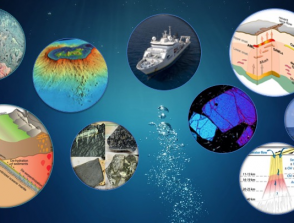The Chicxulub impact structure : petrographic and geochemical insights from the peak ring and aggregation processes in the proximal ejecta layer
15/11/2023
IPGP - Îlot Cuvier
11:00
Séminaires Géosciences Marines
Salle 310
Jean-Guillaume Feignon
Vrije Universiteit Brussel, Belgium
The Chicxulub (~200 km-diameter, 66.05 Ma, Yucatán Peninsula, Mexico)extinction (66 Ma) is the only impact structure on Earth with a well-preserved peak ring. It was drilled in 2016, during the IODP-ICDP Expedition 364, providing a unique opportunity to investigate (petrography, geochemistry, and shock metamorphism) the peak ring rocks, in order to understand how they emplaced, the Yucatán basement rocks, and finally refine the Chicxulub impact event scenario. My PhD work focused mainly on (1) the granite basement unit of the drill core, with detailed petrographic and geochemical characterization, (2) investigation of shocked quartz grains to estimate shock pressures experienced by basement rocks, and (3) the characterization of impact melt rocks with search of meteoritic contamination within, using highly siderophile element contents and Re-Os isotopes analysis. My current work at AMGC (Vrije Universiteit Brussel, Belgium) is to better understand aggregation processes occurring in the proximal ejecta of Chicxulub, including the formation of “accretionary clasts” (very similar to the volcanic “accretionary lapilli”)




